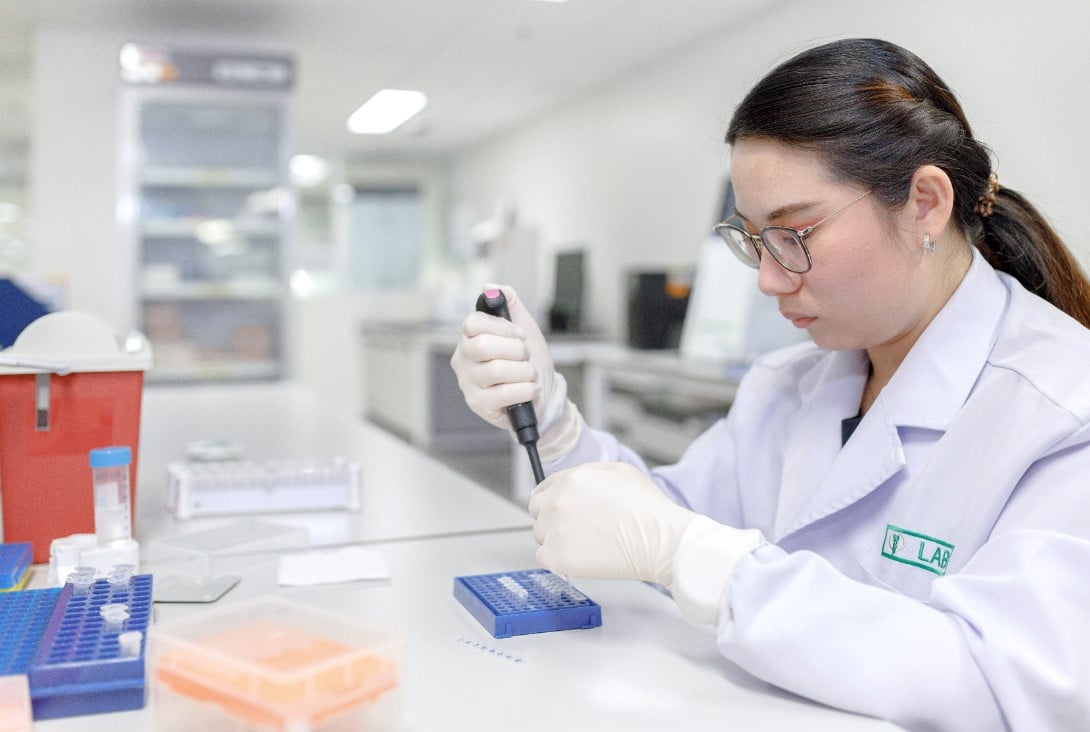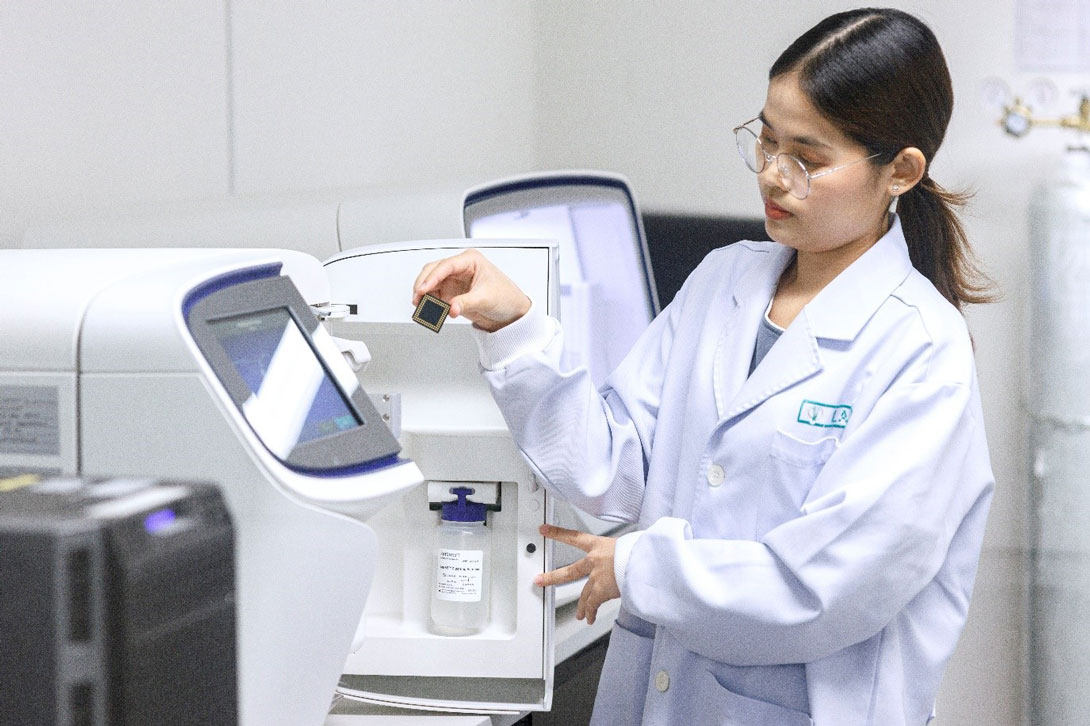“We put tremendous effort into accurately identifying the cancer mutation as quickly as possible. Getting the right medication to our patients in a timely manner depends on it. We ensure that our labs have the best and latest equipment, enabling us to get faster results than sending specimens to external laboratories. Every single minute counts for a cancer patient,” these are the words of Wipa Panmontha Ph.D, the Senior Laboratory Manager at Bumrungrad Hospital.
Tumor gene testing is currently one of the most important tools that we have in cancer treatment. It is what makes
targeted therapies, which can greatly increase the chances of survival and reduce suffering for the patient, possible. Bumrungrad Hospital’s laboratory is capable of comprehensively identifying the gene mutations relevant to many types of cancer, including the EGFR, KRAS, NRAS, BRAF mutations. This provides physicians with an in-house capacity to quickly diagnose the cancer and identify the most suitable treatment method for the patient.
“Cancer diagnosis was often synonymous with the word “biopsy.” It sounds innocuous enough, but it can involve rather serious surgery just to get the tissue sample for testing. Of course, not all patients are able to go through that painful and sometimes very dangerous process. Sometimes the tissue sample provided would be inadequate for a conclusive test result, and it might have to be done all over again. When the latest gene testing technologies became available, our laboratory jumped at the chance to forego the invasive practice of cutting out tissue samples from the patient. We really don’t want the patient to suffer unnecessarily.”

Wipa is referring to next-generation sequencing (NGS), which relies on taking blood samples—also known as a liquid biopsy—to test for certain genetic mutations. The technology is so precise that even fragments of DNA from cancer cells (circulating tumor DNA) can be accurately identified. One of the main benefits of NGS is that the patient has to endure very little pain, while the physicians can gain equal, if not even more useful information than before.
“Apart from enabling us to identify which targeted therapies would be most effective for the patient, NGS also allows us more effectively follow up on treatment as well. The number of cancer cells remaining in the patient can be accurately gauged with far greater frequency than with an
MRI or a PET scan.”
“There was one case, an expat who came in with such a severe condition and was admitted to the ICU. Urgent treatment was required but she was unable to go under the scalpel for a tissue sample. However, the team was able to extract a liquid biopsy for NGS. When the test results came, the tumor profile happened to match a targeted therapy medicine that was immediately available, and the oncologist was able to prescribe it right away. In a matter of days her condition improved to the extent that she was able to leave the ICU,” Wipa recounted with pride.
“We also have an analyzer that is capable of detect a specific gene, instead of having to run a full panel of tests. This greatly reduces the time it takes to analyses the results. We can have definitive results in under three days, which is half the time it would take if we were to use an external laboratory. Time is of the essence. Every single minute counts for our cancer patients.”
.jpg)
“Most recently, we have just added microsatellite instability (MSI) test to our repertoire which can tell us how well the patient is responding to immunotherapy. Our next goal is to develop our capability in a testing for inherited genetic mutations that lead to hereditary cancers,” Wipa excitedly reels off advances coming to her lab. This attitude is typical of the health professionals working at Bumrungrad; it is a matter of professional pride that our patients receive the very best treatment that is available to them.
For more information please contact:
Last modify: August 30, 2023